The First and Last Cat in Space: Cat Astronaut Félicette
26th Dec 2023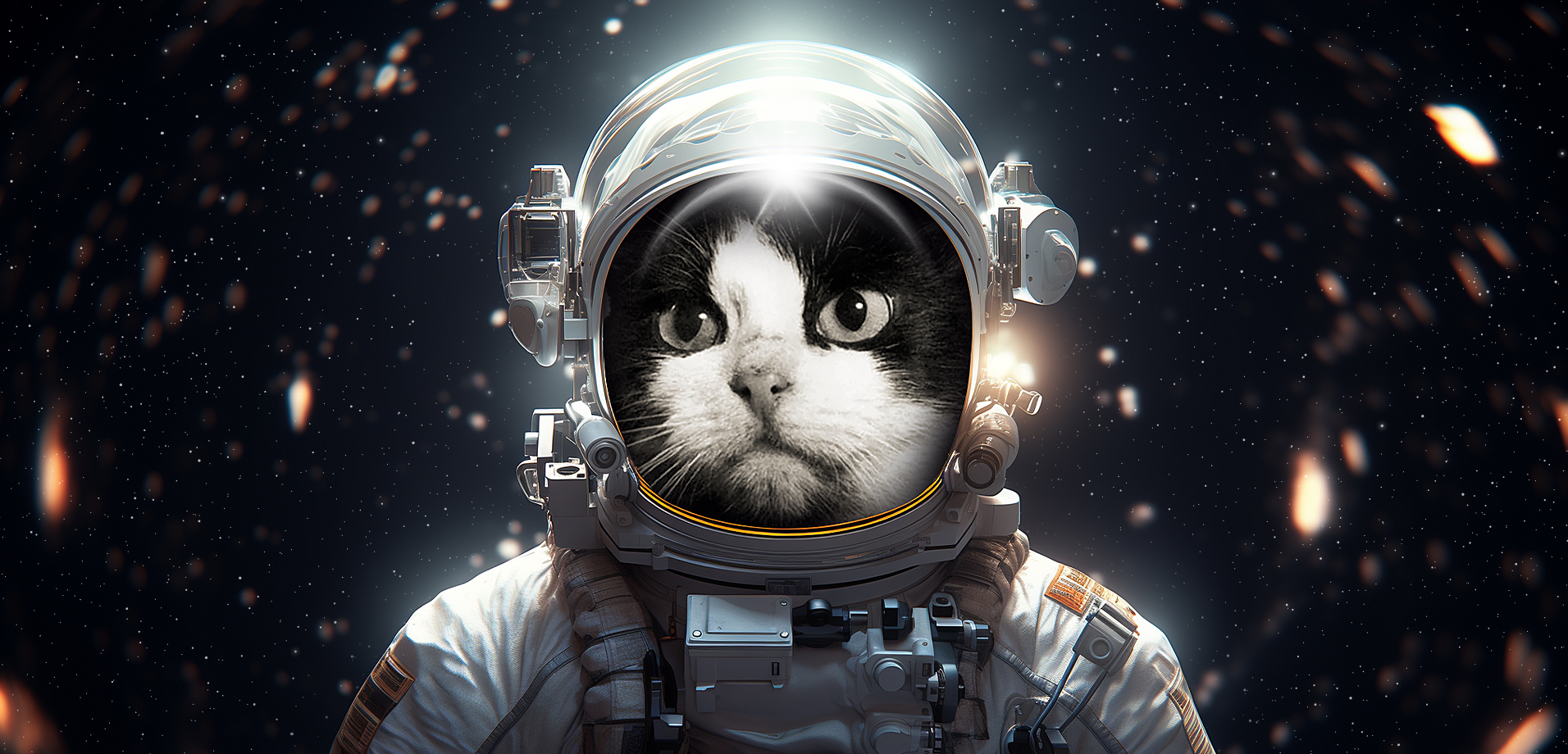
Humans have launched other animals into space from the beginning of populated pace flight. The American chimpanzee Ham and the Soviet dogs Belka and Strelka became heroes, but not everyone knows about cat astronauts. So, let’s look at experiments with cats during the space race and about Félicette, the first cat in space, and the only one thus far.
Cats in zero gravity: the first experiments
On Earth, we are affected by the gravitational attraction of the planet, but beyond its boundaries the gravitation is absent, so scientists had to understand what a person would experience if one were in space. Animals traditionally came to the rescue — dogs, rats, monkeys and… cats.
US Air Force Zero Gravity test with cats in plane
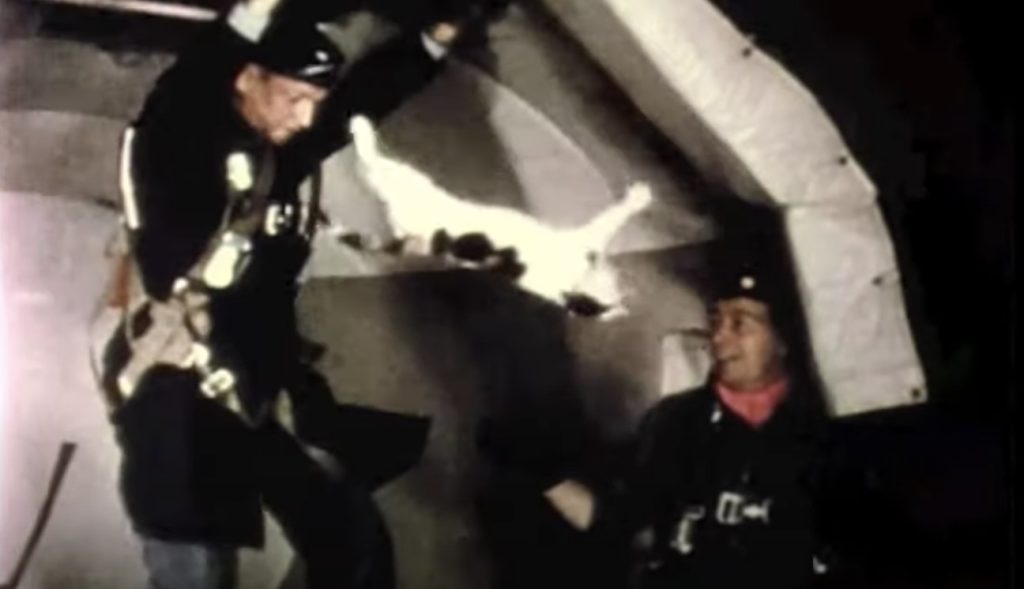
The first experiment with cats in zero gravity was carried out at the turn of the 50-60s. Observing how a falling cat always lands on its paws, deftly turning its body in the air, US Air Force scientists investigated what happens to cats in zero gravity.
The tests took place in a Convair C-131 Samaritan military aircraft. During one flight, the board performed 15 parabolas, each providing 30 seconds of weightlessness. At first, the plane flew horizontally, and cats, thrown from a small height, traditionally landed on their paws. Then the plane entered a steep dive, and in the resulting state of weightlessness, the cats lost this ability.
Even though the tests were successful and all the animals survived, there was no talk of flying them into space. Still, the information from American scientists was not obtained in vain.
Falling cat problem decision
In 1969, Kane and Sher from Stanford University managed to explain the phenomenon of a falling cat, namely, how a cat manages to subjugate the Earth’s gravity so easily. The data from the experiment were successfully used in preparing astronauts for flights, especially to help astronauts to change their body orientation in space without special devices or additional expenses. Kane’s rules formed the basis for exercises performed by astronauts on a trampoline to prepare for flights.
But let’s get back to the main topic — the first cat to go to space.
Has a cat been to space? The French legend
Yes, and it was French. In 1961-62, France, not wanting to stay behind in the space race, sent the rats Hector, Castor and Pollux into space, but they all died. After this, it was decided to switch to cats, since the Soviets and the United States were already experimenting with dogs and monkeys. But the French would not be French if they had not come up with a beautiful legend about why they chose a cat. Romantics among scientists were sure that the Earth was just a temporary refuge for humans, and that our real home was space. And who is the first to step into a new home if not a cat?
CERMA cat astronaut experiment
French researchers at the Centre for Education and Research in Medical Aviation (CERMA) selected 14 outdoor cats for the experiment. The animals were provided with excellent living conditions, but they were not given names; instead, they were numbered so that the staff would not see them as pets and would not become emotionally attached. To prepare cats for floating in space, serious situations were created, including a high-gravity centrifuge, a compression chamber, and compression garments to limit movement.
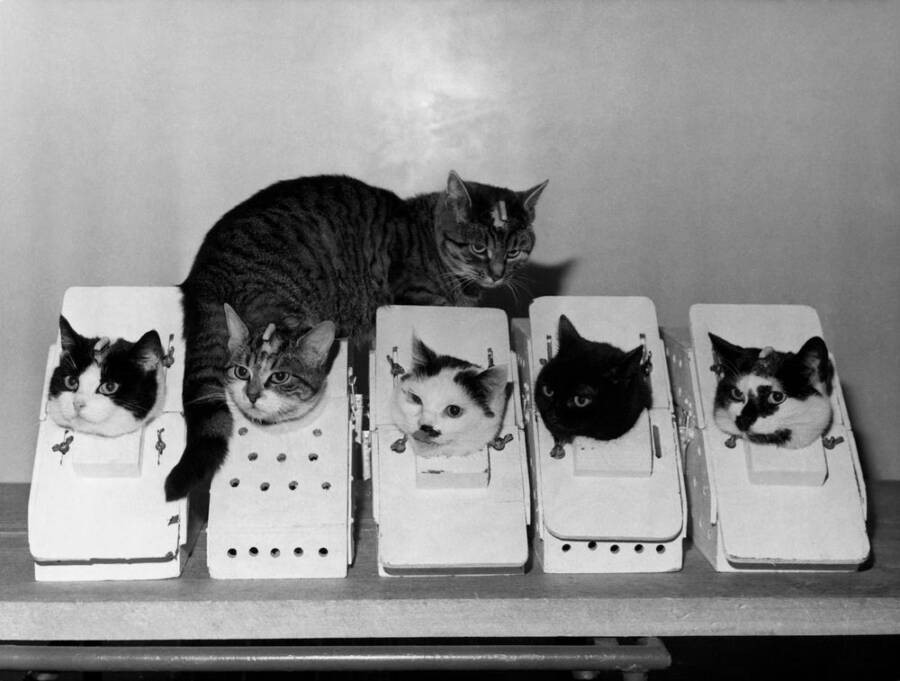
To record reactions, electrodes were placed into the cats’ bodies. They were implanted in different places of the skull, front sinuses, and on the front and hind paws. The use of electrodes limited the time of the experiment, so it lasted only a few months. Responses to the training and behaviour of cats, in general, forced the scientists to reduce the group to four animals and then to two — the main and the backup.
Félicette – the first cat in space
When selecting the main candidate for the role of the first cat astronaut, the choice fell on the animal number C341, with a black and white coat. It was chosen because:
- It was the smallest kitten, weighing only 2.5 kg, while all others gained weight during preparation.
- The cat was very calm and even-tempered.
On 18 October 1963, C341 was launched into space in a special capsule of a Véronique AG1 rocket from the Colomb-Béchar launch site in the centre of Hammaguir in the Algerian Sahara Desert. The capsule did not enter orbit but rose to an altitude of almost 160 km. Then, it separated from the rocket and parachuted down to Earth. The entire flight took about 15 minutes.
After its success, the French press decided that the furry pioneer should have a name. Then the pet was named Felix in honour of the cartoon character “The Cat,” but it turned out that C341 is a she-cat! And Felix had to become Félicette.
Did the cat in space survive?
Yes, but it wasn’t easy for Félicette. She experienced weightlessness for 5 minutes and a g-force of 9.5 g during launch and 7 g during descent, which is 2–3 times more than what the Apollo, Saturn 5, and even SpaceX Dragon astronauts later experienced.
The cat’s breathing was monitored through microphones mounted on the chest and the nose cone of the rocket. Observational data showed that the astronaut cat increased its breathing rate and heart rate during ascent and descent, but then everything returned to normal.
What happened to the first cat in space afterwards?
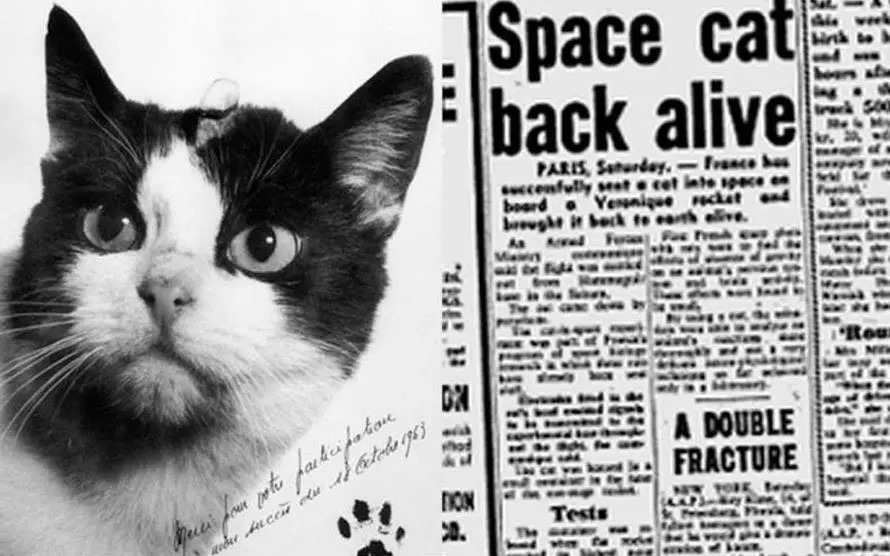
The first spaceflight of an astronaut cat was hailed by the media as an outstanding achievement. Félicette quickly became famous, and people began to produce postcards and posters with the astronaut cat. However, photographs of a cat with electrodes implanted in its head have drawn criticism from many activists speaking against animal cruelty. However, this did not stop the scientists from killing Félicette.
Why was Félicette killed?
Two months after landing, Félicette was euthanized so that an autopsy could be performed to see how the flight affected her body. Scientists later admitted that they did not learn anything useful from the autopsy.
But they gave the first cat in space a memorial
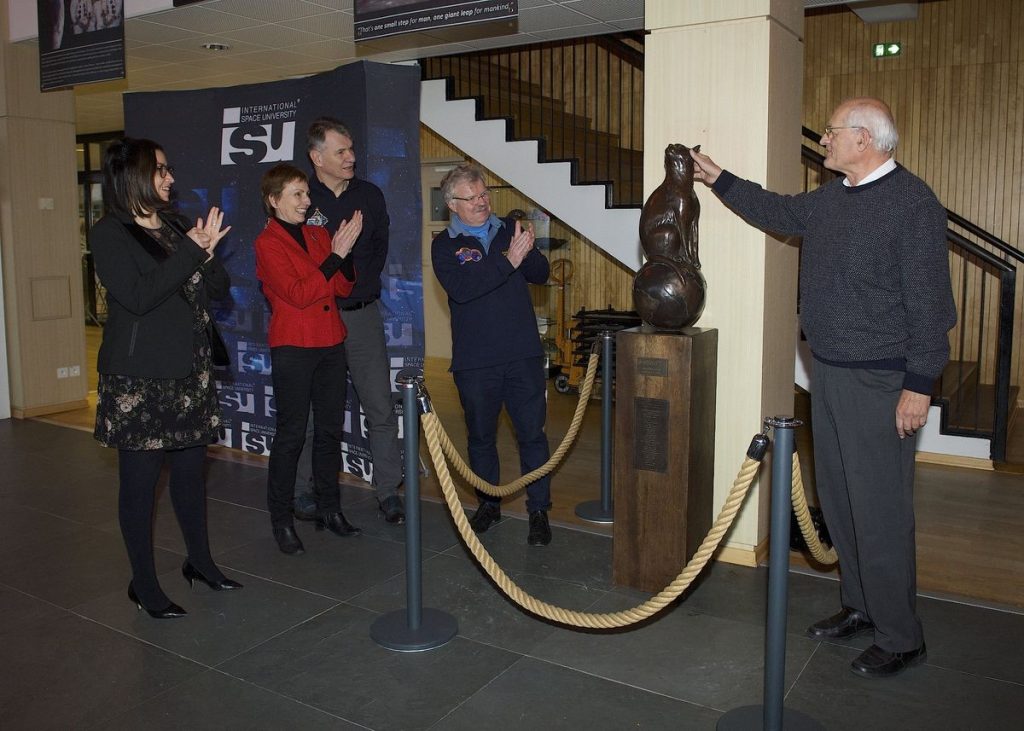
The first astronaut cat has forever gone down in the history of astronautics, and the bronze 1.5-meter Félicette cat statue, installed in front of the International Space Institute in France, reminds us of her contribution to science. The sculpture was created by Jill Parker, depicting Félicette sitting on the Earth and looking up at the sky. The monument was opened on December 18, 2019.
Have any other cats been sent into space?
A week after Félicette’s flight, on 24 October 1963, CERMA attempted to send another cat subject into space again, but the launch was unsuccessful, and an accident occurred. The capsule with the animal under the nameless number C 333 was found two days later, far from the launch pad, and the cat astronaut was dead. The animal never received a name.
CERMA did not launch any more cat astronauts. All cats participating in the experiment were euthanized at the end of the project. Only one was lucky to survive. The implanted electrode deteriorated and had to be removed. The cat was named Skubidoo and was left to live in the laboratory, later, it was taken home by one of the employees.
Brazilian experiment
In 1958, the Brazilian Army planned to launch a cat into space in a sealed chamber equipped with recording devices. Astronaut cat Flamengo was trained, and his photos spread around the world. However, news of the upcoming flight caused a flurry of protests from cat lovers, and the flight was cancelled.
Iranian intentions
In 2013, Iran, inspired by the successful launch of a monkey, announced plans to send a Persian cat into space, but the cat-in-a-spaceship-idea was cancelled. Besides, the fact of the monkey’s flight was subjected to great doubt by journalists: photographs appeared on the Internet allegedly showing various monkeys before and after the launch.
Iranian officials responded by saying that the second photo was of a backup monkey that was also being trained in case of an emergency animal replacement before launch but was not used for spaceflight.
Final thoughts
The successful flight of the cat astronaut Félicette proved the unique endurance of these animals and gave scientists information that helps prepare people for flight and staying in weightlessness conditions. Cat in space experiment allowed France to establish itself as a worthy participant in the space race and subsequently send ten astronauts into space.
References:
- Hanneke Weitering. “First Cat in Space to Receive a Proper Memorial.” 2017 https://www.space.com/38702-felicette-first-space-cat-memorial-kickstarter.html
- CAROLINE DELBERT. “That Time the Air Force Tossed Cats in Zero Gravity” https://www.popularmechanics.com/science/a33621810/air-force-cats-zero-gravity-weightlessness/
- The “falling cat” phenomenon that helped NASA prepare astronauts for zero gravity, 1969 https://rarehistoricalphotos.com/the-falling-cat-nasa-space-casts-1969/
- David Dickinson “Is Iran really planning on sending a cat into space?” 2013 https://www.universetoday.com/105215/is-iran-really-planning-on-sending-a-cat-into-space/
- David Cassel. “Remembering the First Cat in Space” 2017 https://thenewstack.io/remembering-first-cat-space/


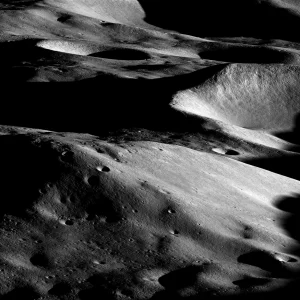



Thank you for your comment! It will be visible on the site after moderation.